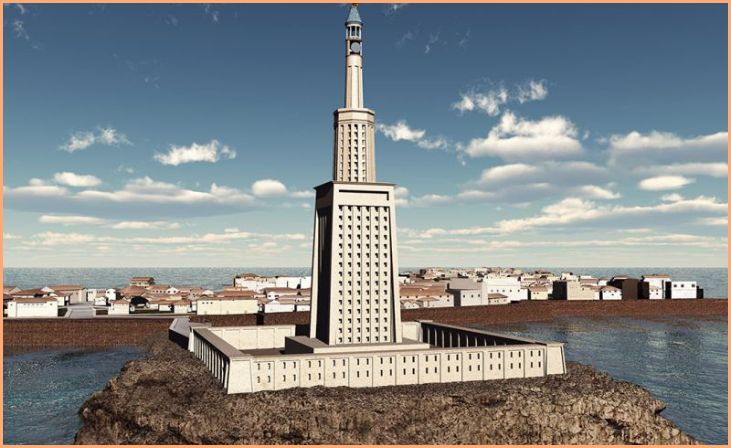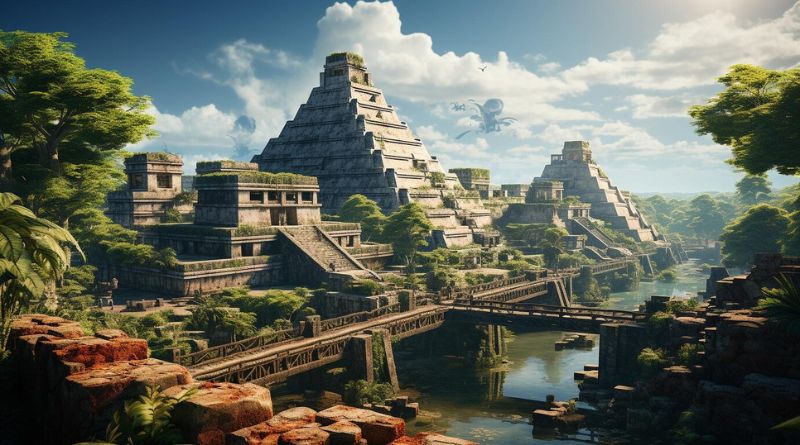The Wonders of the Ancient World, a collection of extraordinary architectural and artistic marvels, stand as testaments to the ingenuity and skill of ancient civilizations. These seven wonders, ranging from the majestic Great Pyramid of Giza to the enigmatic Hanging Gardens of Babylon, have captivated human imagination for centuries.
Each wonder holds a unique story, reflecting the cultural, religious, and technological achievements of their respective societies. As symbols of grandeur and human accomplishment, the Wonders not only served practical purposes but also carried profound cultural significance. While many have been lost to time and natural disasters, their legacy endures, shaping our understanding of the past and inspiring awe for the remarkable feats achieved by our ancestors.
In this exploration, we delve into the history, architecture, and cultural importance of these marvels, unraveling the mysteries that surround them and appreciating the enduring impact they’ve had on the course of human history.
Wonders of the Ancient World
The Great Pyramid of Giza (Egypt)

The Great Pyramid of Giza, located in Egypt, is one of the Seven Wonders of the Ancient World. Constructed around 2560 BCE as a tomb for Pharaoh Khufu, it is the only wonder still standing today. This massive limestone and granite structure originally stood at 146.6 meters (481 feet) and is comprised of approximately 2.3 million blocks.
The precision of its construction, aligned with the cardinal points of the compass, and the mysteries surrounding its building techniques have captivated historians and archeologists for centuries. Serving as a testament to ancient Egyptian engineering and architectural prowess, the Great Pyramid remains an iconic symbol of the ancient world.
The Hanging Gardens of Babylon (Iraq)
The Hanging Gardens of Babylon, situated in ancient Babylon (modern-day Iraq), are one of the Seven Wonders of the Ancient World. Created, according to historical accounts, by King Nebuchadnezzar II for his homesick wife, Amytis of Media, around 600 BCE, the gardens were a marvel of terraced greenery.
These lush gardens, irrigated by a sophisticated system, showcased a botanical spectacle with trees, flowers, and shrubs seemingly suspended in the air.
While their existence remains a subject of debate among scholars, the Hanging Gardens are celebrated for their architectural and horticultural innovation, embodying the opulence of Babylonian civilization.
Also, Read – Cities With The Cleanest Water In The World
The Statue of Zeus at Olympia (Greece)
Crafted by the renowned Greek sculptor Phidias around 435 BCE, the Statue of Zeus at Olympia in Greece was a masterpiece dedicated to the king of the Greek gods. Housed in the Temple of Zeus at Olympia, the statue stood over 12 meters (40 feet) tall and depicted Zeus seated on a magnificent throne.
Fashioned from ivory and gold-plated bronze, the statue embodied the ideals of classical Greek artistry. Zeus was portrayed with regal grandeur, his divine presence evoking awe and reverence.
Despite the eventual disappearance of the statue, likely due to a fire in the ancient world, its legacy endures as a pinnacle of ancient Greek sculpture.
The Temple of Artemis at Ephesus (Turkey)

The Temple of Artemis at Ephesus, located in present-day Turkey, was a marvel of ancient architecture and devotion. Erected around 550 BCE and dedicated to the Greek goddess Artemis, it was a colossal temple adorned with intricate carvings and numerous columns.
Standing as one of the Seven Wonders of the Ancient World, it symbolized the grandeur of the Hellenistic period. Unfortunately, the temple faced multiple incidents of destruction, including arson by Herostratus in 356 BCE and subsequent rebuilding.
Ultimately, it succumbed to decay and was finally dismantled during the early Christian era. The remnants of this once-splendid sanctuary serve as a testament to ancient Ephesian craftsmanship and religious reverence.
The Mausoleum at Halicarnassus (Turkey)
The Mausoleum at Halicarnassus, situated in ancient Halicarnassus (modern-day Bodrum, Turkey), was a monumental tomb built around 353 BCE for Mausolus, a Persian satrap. Commissioned by his grief-stricken wife Artemisia, the mausoleum was a fusion of architectural styles, featuring Greek, Egyptian, and Lycian influences.
Rising to about 45 meters (148 feet), adorned with intricate sculptures and reliefs, it became a model for subsequent monumental tombs, coining the term “mausoleum.” Despite suffering damage from earthquakes, the ruins bore witness to the opulence of classical Hellenistic art and the lasting impact of Mausolus’s legacy, making it one of the Seven Wonders of the Ancient World.
The Colossus of Rhodes (Greece)
The Colossus of Rhodes, erected on the Greek island of Rhodes around 280 BCE, was a colossal bronze statue standing over 30 meters (98 feet) tall. Built to honor the sun god Helios, it stood at the entrance of the harbor, symbolizing the city’s triumph over a siege.
Crafted by the sculptor Chares of Lindos, the Colossus was a marvel of ancient engineering and artistic achievement. However, it collapsed during an earthquake in 226 BCE, lying in ruins for centuries. Despite its brief existence, the Colossus of Rhodes left an enduring legacy, influencing depictions of colossal statues in art and literature throughout history.
Also, Read – Best Hot Springs in the World
The Lighthouse of Alexandria (Egypt)

The Lighthouse of Alexandria, constructed on the island of Pharos in ancient Egypt around 280 BCE, was one of the Seven Wonders of the Ancient World. Soaring to a height of approximately 100-130 meters (330-430 feet), it guided sailors safely into the bustling harbor of Alexandria using an ingenious combination of mirrors and open flame.
Built during the Ptolemaic Kingdom, it served as a symbol of architectural and maritime prowess. Unfortunately, a series of earthquakes led to its gradual demise, and by the 14th century, the lighthouse had disappeared beneath the waves. Its legacy persists in the historic significance it held as an ancient marvel of engineering and navigation.
Conclusion
In conclusion, the Wonders of the Ancient World, though largely lost to time, continue to resonate as cultural and architectural marvels. Their enduring legacy transcends antiquity, leaving an indelible mark on human history.
These wonders symbolize the creative spirit and technological prowess of ancient civilizations, sparking awe and fascination. While many have crumbled, their significance lives on, reminding us of the timeless pursuit of excellence in craftsmanship and the perpetual human desire to build monuments that stand as testaments to the heights of achievement and innovation.
The wonders may be gone, but their impact lingers, shaping our understanding of the past and inspiring future generations.
FAQs
These structures were considered wonders due to their extraordinary architectural, artistic, and engineering achievements. They were renowned for their grandeur, scale, and cultural significance, showcasing the advanced capabilities of the civilizations that built them.
The specific criteria for selecting the Wonders of the Ancient World are not precisely known, but they generally reflected exceptional human achievement and cultural importance. Factors such as size, beauty, and technological innovation likely played a role in their inclusion.
Of the original Seven Wonders, only the Great Pyramid of Giza remains largely intact. The others have been destroyed or severely damaged over time due to natural disasters, war, or human activities.







